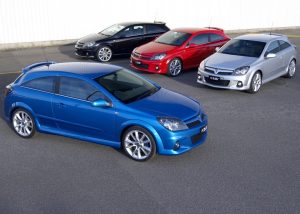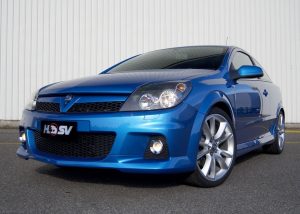Recalls: HSV AH VXR
Overview
Manufacturers, or importers, issue recalls for defects or faults which have the potential to cause injury. Generally, manufacturers will inform the original buyers if their vehicle is subject to a recall and of the steps required to remedy the defect or fault. Please note that the recalls below (if any) are for Australian-delivered vehicles only. Furthermore, the number of recalls should not be taken as an indication of a model’s reliability or its safety more generally.
Recalls: HSV AH VXR
HSV AH VXR: sunroof may dislodge
In February 2011, a recall was issued for AH Astra models manufactured from 2002 to 2006 which were fitted with a factory-fitted sunroof. A bonding condition with the glass panel on the sunroof could result in the panel potentially separating from its frame and dislodging while the vehicle was in motion (PRA 2011/12317).
2006-09 model year HSV AH VXR: Takata airbag recall
In March 2019, a recall was issued for 2006-09 model year HSV AH VXR vehicles. These vehicles had Takata driver airbags and propellant wafers inside the airbag could absorb moisture over time. In the event of airbag deployment, excessive pressure inside the metal airbag inflator housing could cause it to explode or rupture – this could cause metal fragments to be projected through the airbag cushion and into the vehicle’s cabin. These metal fragments had the potential to cause serious injury or fatality. For the VINs of the recalled vehicles, please see PRA 2019/17363.
Problems and faults: HSV AH VXR
Overview
This section identifies potential problems, causes and fixes based on the experiences of owners and repairers, online sources and technical service bulletins. This information is provided solely for reference purposes and AustralianCar.Reviews recommends that only properly qualified persons carry out repairs or modifications. Furthermore, the number of items below should not be taken as an indicator of a model’s reliability or the frequency with which they may occur.
To report a problem or fault to the AustralianCar.Reviews team, please use the Contact Us form. Note that AustralianCar.Reviews does not offer advice on automotive problems or disputes; such enquiries will not receive a reply. For vehicles purchased from dealers after 1 January 2011, please see our Australian Consumer Law fact sheet.
HSV AH VXR: M32 transmission bearing failure
Symptoms of worn bearing
For the HSV AH VXR, the bearing on top of the sixth gear in the M32 manual transmission is susceptible to wear and, eventually, failure. Symptoms of a worn bearing include –
- Gearstick movement: when disengaging the clutch in 1st gear and pulling away – while holding the gearstick – the gearstick may move back into your hand by around 10 to 20 mm (the greater the movement, the worse the bearing wear). After further wear, this movement may also occur when the transmission is in fifth or sixth gear;
- A whining noise in 1st, 2nd, 5th and 6th gear: a whining noise may be heard from the glovebox area when driving in 1st, 2nd, 5th and 6th gears. In particular, a whining noise may be heard when driving at highway speeds in sixth gear and the accelerator is pressed; and,
- A whining noise in all gears: a whining noise – which is proportional to vehicle speed – may be heard in all gears regardless of whether the clutch is engaged or disengaged.
Explanation of symptoms
The bearing which is susceptible to wear sits on top of the output shaft that is responsible for gears 1, 2, 5 and 6 – this is why these gears exhibit the symptoms described above. For these symptoms,
- It is wear of the bearing rollers which causes them to be loose and have excessive play (see video below). This, in turn, causes movement in the gearstick since the gear linkage is connected to an internal selector, and bearing wear causes the shaft inside the gearbox to move up and down when power is applied. The shaft then moves the selector ring which feeds back to the gearstick; and,
- Whining noises are caused by pitted pinion bearings which may be due to metal fatigue. It is understood that M32 transmissions produced from 2010 to 2012 are more susceptible to pitted pinion bearings since General Motors replaced the Timken and SNK bearings with FAG and NGBC bearings.
Cause of bearing wear
The primary cause of bearing wear is inadequate lubrication and subsequent overheating – this may be attributed to:
- The design of the M32 transmission: while the original M32 transmission was introduced in 2004, a revised ‘Generation 2’ M32 transmission was introduced for the 2012.5 ‘model year’ (though some vehicles were not fitted with the revised transmission until 2013). The ‘Generation 2’ M32 transmission had:
- Revised end casings in which there was an oil feed to the output shaft end bearing that passed through the input shaft end bearing; and,
- Larger bearings (62 mm compared to 55 mm) with greater surface area.
- Oil overheating: if the gearbox oil overheats, it will no longer conform to its specifications and adequately lubricate the bearings; and,
- Inadequate servicing: oil deteriorates over time and needs to be replaced according to the scheduled service intervals.
Management and ‘clutch slip’ warning
When the driver becomes aware of the symptoms above, it is recommended that 5th and 6th gears are avoided and the 3rd and 4th gears are used instead since this transfers the engine’s torque to the other output shaft and takes the load off the worn bearing.
If the worn bearing is not replaced, the outer bearing race can start to spin and wear the casing. Eventually, this can punch a hole in the casing, the bearing may collapse, the rollers can release and cause damage to the gears – if this occurs, the entire transmission has to be replaced. Owners have described clutch slip as a warning that the bearing is about to collapse.
Repair options
In repairing the M32 transmission, the standard replacement option is to replace all six bearings – this includes the faulty ‘6th gear’ bearing, the 4th gear output shaft bearing, both input shafts and both pinion bearings. This requires removal of both input and output shafts/gears sets, and replacing the inner and outer races. Since this method does not address the lubrication deficiencies of the original M32 transmission, however, it is recommended that the ‘Generation 2’ casing with larger bearings be fitted. To install the ‘Generation 2’ casing, the entire gearbox has to be removed.
For further information about the M32 transmission, please see:
- Eco Torque UK: M32 Gearbox – uprated bearings and end casing;
- Tech 2 Guru: Vauxhall M32 six-speed manual transmission; and,
- WG Motor Works: M32 Gearbox.
HSV Astra VXR & CIM malfunction: difficulty starting and other symptoms
In 2010, Vauxhall UK issued a ‘non-code action’ for Vauxhall Astra H vehicles that were manufactured from 1 January 2004 to 22 September 2010. For affected Vauxhall Astra H vehicles, the Column Integration Module (CIM) could malfunction (NCA/2010/021). A failed CIM may prevent the vehicle from starting, make the vehicle difficult to start, prevent the horn from working when the headlights are on or interfere with the operation of the headlights and wipers.
HSV AH Astra VXR: other problems and faults
- If the vehicle experiences central locking faults, incorrect fuel gauge readings and problems with the power windows, the REC (rear electrical centre) unit may have failed and require replacement.
- Water could accumulate at the top of the front suspension turrets and cause premature corrosion.
- The windscreen wiper linkages could wear prematurely and result in excessive movement of the wiper arms.




